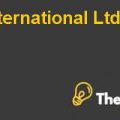
HP NANOTECH: PARTNERSHIP WITH CNSI Case Solution
Problem Statement
Stan Williams is one of the leading nanotech researchers at HP Laboratories and he must review that whether HP needs to renew its sponsorship with the California NanoSystems Institute, send the funds on internal research and development within the research labs or form contracts with the foreign universities. This case illustrates the challenges which are encountered in forming a partnership between a firm and a university and also develops implications for the national competitiveness.
Question 1
What should Stanley Williams do? Renew the relationship, do the research internally, or contract with foreign universities?
The partnership with the California NanoSystems Institute has come to an end after a period of 4 years. Now the time had come for Stanley Williams to decide that, whether HP should renew its partnership with California NanoSystems Institute, conduct the research internally through its research labs or contract with the other foreign universities. Each of these three options is discussed individually, and then a final recommendation has been made as follows:
Renew the Relationship with California NanoSystems Institute
When the original agreement had been discussed by Williams and Witkin who was the university relations program manager, there were a number of different issues which had delayed the signings of the memorandum of understanding and the sponsored research agreement. It was in August 2001 that a concrete draft had been formed for MoU and brought to the table however, it became immediately apparent that there were fundamental differences in the way both the parties wanted the agreement to be constructed. It was not before March 13, 2003 that the agreement was signed and the four year period had begun.
Now William was considering that whether HP needs to renew the partnership with California NanoSystems Institute or not. This decision would depend upon the performance of the partnership and the contribution made by California NanoSystems Institute to the research labs of HP. Exhibit 6 shows the timeline of the whole process of the establishment of the agreement between California NanoSystems Institute and HP and it shows a number of the problems. First of all, there had been a miscommunication gap about the host of the benefits which would flow to HP in return for the sponsorship. Apart from this, the issue of licensing had also become another major obstacle in the way of the partnership.
This was because HP had demanded a nonexclusive royalty free licensing to the new technologies which would be developed at California Nano Systems Institute. However, this meant that HP would not be paying any royalty fees such as the percentage of sales. This was against the UCLAs legal counsel and also against the practice of UC. The main problem was that this funding might be viewed as a last resort by many of the faculties.
Therefore, provided all such issues are resolved in advance and a royalty fee is paid to California Nano Systems Institute for the technologies developed by the institute, HP should reinvest in the partnership. Most of the terms of MoU and SRA would remain same however, the problems in the original agreement need to be resolved. These problems would be further discussed in the next question. Apart from this, the California Nano Systems Institute had proved to be a good source of support in nanotechnology development for HP over the period of the agreement which is four years. The works of the labs were also well under way with publication, symposi a and joint research and new knowledge had also been flowing from California Nano Systems Institute to HP. The financial performance is also good for HP till 2004 as shown in exhibit 1 in the appendix...................
This is just a sample partial case solution. Please place the order on the website to order your own originally done case solution.












